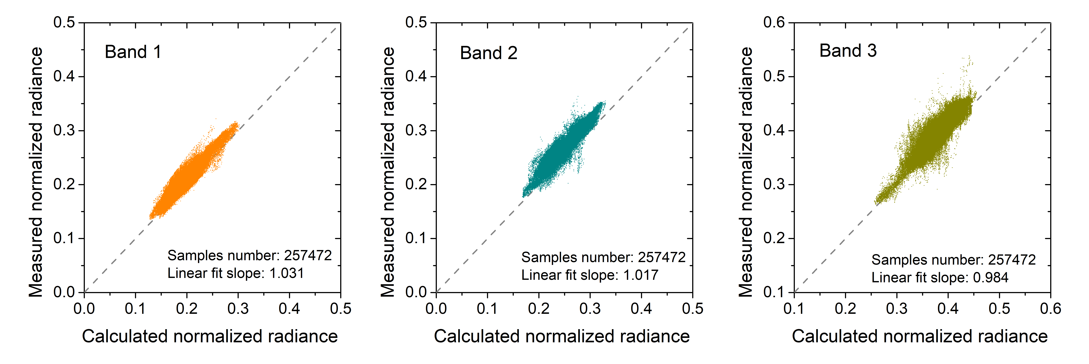
An in-orbit test of the polarization crossfire (PCF) sensor suite onboard GaoFen-5 (02), a hyperspectral Earth Observation satellite launched on September 7, 2021, was carried out by a joint research team led by Prof. LI Zhengqiang from the Aerospace Information Research Institute (AIR), Chinese Academy of Sciences (CAS).
The team used vicarious calibration methods based on natural scenes, such as Rayleigh scattering and sun glint over ocean and the desert sites, to detect the in-orbit radiation intensity and polarization detection performance of the PCF sensor suite.
The PCF sensor suite onboard the Gaofen-5 (02), as the first dedicated satellite sensor for PM2.5 remote sensing, can provide basic observational data for global PM2.5 detection and research on aerosol climate effects.
The PCF suite is based on the combined observation of two types of polarized load with a wide field of view Directional Polarimetric Camera (DPC) and the Particulate Observing Scanning Polarimeter (POSP). It realizes the optimized detection of aerosol comprehensive parameters.
As a new type of atmospheric remote sensing technology developed in recent years, polarization remote sensing technology can simultaneously observe the intensity and vibration direction of electromagnetic waves, which doubles the amount of information of the detected target, but meanwhile increases the complexity of its optical measurement system and the difficulty of radiation calibration. After the satellite is launched, in-orbit vicarious calibration based on natural scenes becomes an important means of monitoring the satellite in-orbit radiometric status.
The team conducted in-orbit radiation tests on the DPC and POSP sensors carried by the Gaofen-5 (02) satellite by using natural targets with specific radiation or polarization characteristics that can be accurately simulated, including ocean Rayleigh scattering, sun glint over ocean, homogeneous desert sites.
The researchers detected the in-orbit radiometric sensitivity changes of the sensors and evaluated their overall radiation detection performance. They also verified the cross-radiation calibration scheme, transferring the high-accuracy onboard calibration coefficients of POSP to the wide field of view of DPC.
This test is expected to provide high-precision in-orbit radiation calibration coefficients for the DPC and POSP and lay the foundation for high-precision aerosol remote sensing applications.

Fig. 1 Major oceanic and desertic sites for the in-orbit radiometric calibration of PCF onboard GaoFen-5 (02). (Image by AIR)

Fig. 2 Preliminary results of the in-orbit test of DPC. (Image by AIR)

86-10-68597521 (day)
86-10-68597289 (night)

52 Sanlihe Rd., Xicheng District,
Beijing, China (100864)

